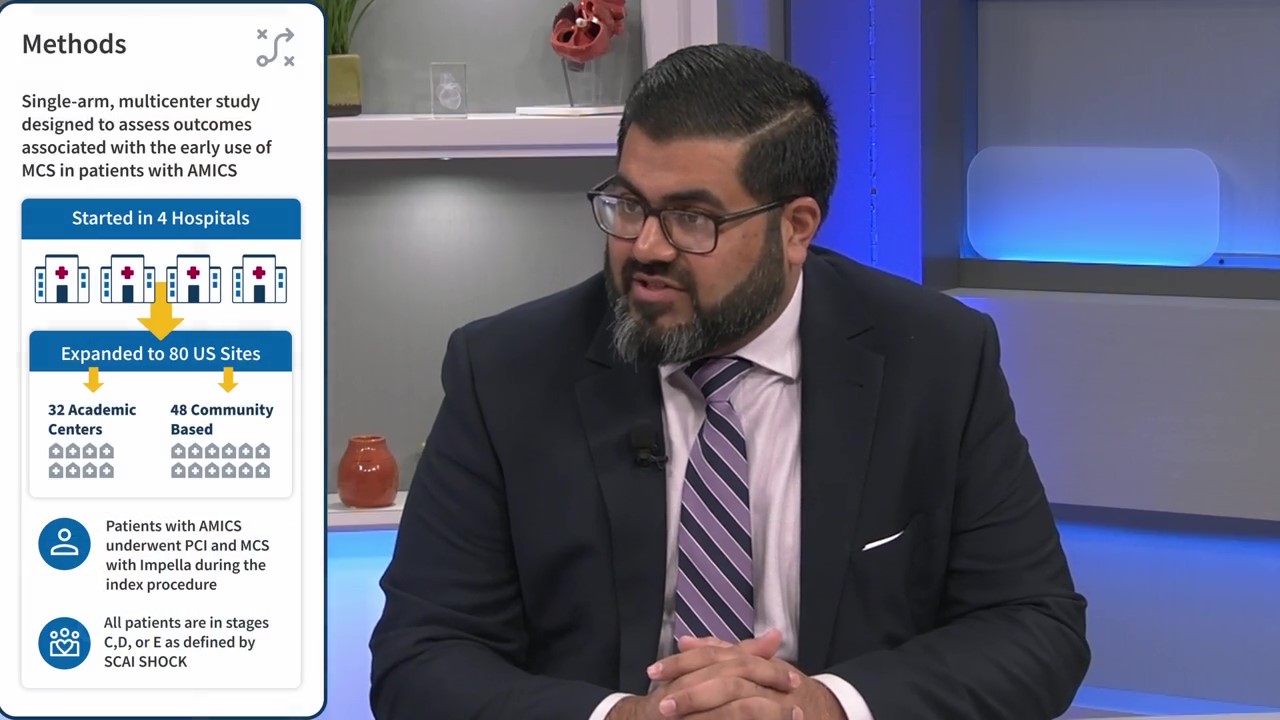AMI Cardiogenic Shock
From Medical Therapy to Mechanical Support – Strategies for Device Selection and Insertion Techniques
by Letizia F. Bertoldi, Andrea Montisci, Dirk Westermann, Mario Iannaccone, Vasileios Panoulas, Nikos Werner, Norman Mangner
Key Topics and Take Aways:
- Limit inotrope use to the lowest dose and shortest time interval to avoid negatively impacting myocardial recovery and end-organ function; frequently monitor patients to determine whether escalation to pVAD support is necessary.
- Invasive hemodynamic measurements can help identify patients who are rapidly deteriorating and determine which pVAD might be most appropriate.
- pVADs should be first line treatment in patients with SCAI stage D and E shock.
- Selecting an appropriate MCS device for cardiogenic shock requires evaluating several factors including:
-Urgent/emergent status of pVAD insertion
-SCAI shock stage
-Etiology of CS and potential for heart recovery, as well as the predicted duration of support
-Right ventricular function
-Presence of contraindications
-Expertise and confidence with the different devices
- Best practices for pVAD insertion include ultrasound guidance for vascular access, micropuncture, single access technique, and correct positioning and fixation before transfer to ICU.
In “From Medical Therapy to Mechanical Support – Strategies for Device Selection and Insertion Techniques” published in European Heart Journal, Letizia Bertoldi, MD, and colleagues describe how catecholamines and percutaneous ventricular assist devices (pVADs) are used to treat cardiogenic shock (CS) according to underlying etiology. They also discuss best practices for pVAD insertion.
The authors explain that while inotropes and vasopressors are often considered the cornerstone of CS therapy, these pharmacologic agents “are typically limited by an imbalance between myocardial oxygen supply and demand, as well as metabolic derangements.” They describe a cardioprotective vision of CS management with a paradigm shift toward an “inotrope-free strategy” and early insertion of pVADs to allow the myocardium to rest (unload) to maximize the chance for recovery. They write, “The most recent guidelines from the European Society of Cardiology emphasize this concept by assigning to pVAD the highest class of recommendation (as compared to inotropes) as first line strategy in CS management (IIa vs. IIb).”
Based on evidence in the literature and expert consensus, Bertoldi et al. propose an algorithm for practical management of inotropes in CS as well as an algorithm for selection of pVADs in patients with CS. The authors explain that in-hospital mortality rates are significantly higher in patients with higher vasoactive-inotropic score (VIS), and if VIS is included in management algorithms it could help standardize the degree of hemodynamic support across institutions and could help clinicians identify patients who might benefit from escalation of support.
“Inotropes still play a role as first line therapy in these early CS profiles, but their use should be limited to the lowest dose and shortest time interval to avoid end-organ impacts.”
While acknowledging that inotropes still play a role as first line therapy in early CS (particularly SCAI stages B and C), the authors write, “their use should be limited to the lowest dose and shortest time interval to avoid end-organ impacts.” They advocate re-evaluating patients every 2 hours during the first 24 hours to determine whether escalation to pVAD support is necessary.
“In SCAI D and SCAI E patients, pVAD should be the first line of treatment,” the authors write. “In the early phase after SCAI D-E CS diagnosis, inotropic agents have to be considered as a bridge to pVAD, and their use must be limited to the shortest time interval, given an early and timely implantation directly correlates with better outcomes.” The authors describe the factors driving mechanical circulatory support (MCS) device selection, and in their algorithm recommend VA ECMO for patients in SCAI stage D or E shock or in refractory cardiac arrest. The algorithm also recommends assessing patients for potential escalation to ECMELLA support (VA ECMO plus Impella CP® or Impella 5.0® or Impella 5.5®). In addition, it is important to monitor pulmonary artery catheter (PAC) data to watch for signs of right ventricular failure.
The authors conclude with a discussion of best practices for pVAD insertion. These include ultrasound guidance for vascular access, micropuncture, single access technique, and correct positioning and fixation before transfer to ICU.
Sign up for Latest Updates
NPS-4066



